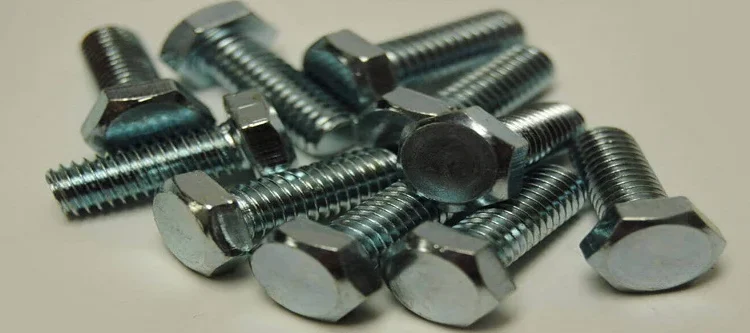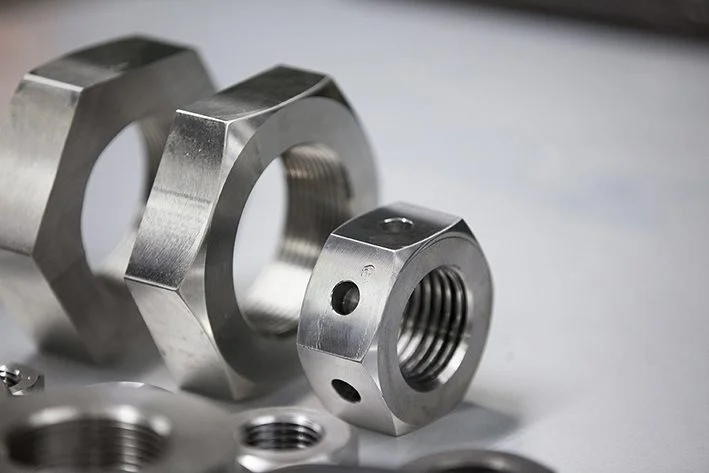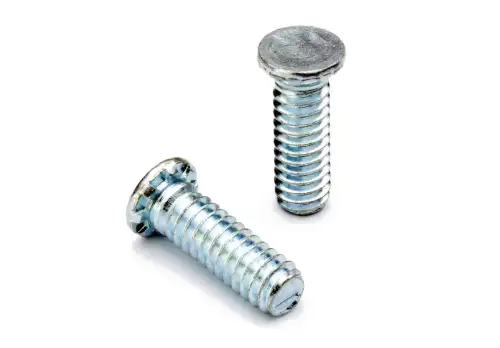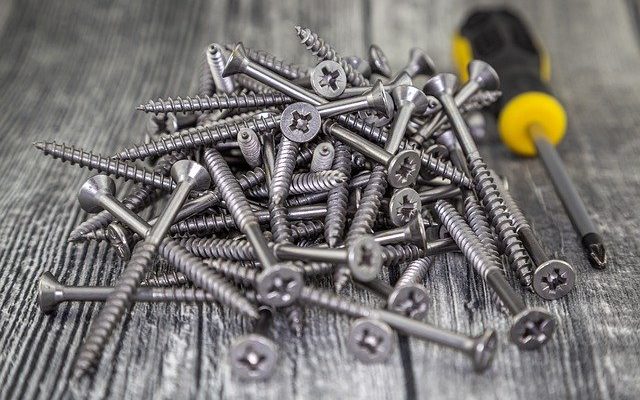
5 Ways To Accurately Measure Fastener Strength
To accurately measure fastener strength, utilize proof load, tensile, yield strength, hardness, and torque testing, aligning with ASTM standards for precise and reliable results
Proof Load Test Methods
Proof load testing constitutes a crucial method to verify that fasteners do not fail under specific loading conditions. This is intended to ascertain that the fastener is able to withstand the design load without any permanent deformation.
Initial Setup and Preparation
Proof loading of the fasteners is started with the fasteners being mounted in a tension column at the testing laboratory. Work need to get accomplished accordingly to establish the fastener into the proper orientation that the load is applied somewhat regularly and next along the axis. This is important, as consistent and meaningful results can only be obtained by proper alignment, as otherwise, false readings can occur or the fastener can get damaged in ways that were not intended.
Applying the Load
Proof load testing is the backbone of load-factored fastening. Each fastener is exposed to a predetermined load. Industry standards — for example ASTM A354 for bolts specifying a minimum proof load for each bolt grade and sizing of a bolt. For example, a Grade BD bolt might need a proof load of 17,050 lbf. The load is slowly increased to this point and held for an amount of time to determine whether the fastener can hold the load at that level without deforming permanently.
Measurement and Observation
MeasurementsReeds etc., HGS In the test follow measurements are essential. Fastener lengths are frequently gaged before and after the imposition of a load. Failure of the test; any permanent elongation will occur after the load is removed. The fastener will be detected even a slight change in the dimensions accurately and measuring instruments are best used for this action.
Tracking data & compliance
Role of Engineering and Calibration Department of civil engineering labThe results of proof load test which are being conducted for calibrating different machines are properly noted and investigated is they are legit or not. The load each fastener can support is recorded and any sign of yielding or set that has occurred. The results obtained are then checked against certain criteria to find out whether the fastener you are designing complies with the required criteria of the intended application.
Practical Implications and Industry Clarity
Industries where a fastener failure can result in extensive loss of life and property,like construction, automotive, and aerospace, use proof Load testing as a practical approach to ensure the security of their products. These tests help manufacturers ensure that their products are compliant with standards and safe to use for critical functions. This testing is done to improve the safety and quality of the fasteners used in different industries.

Tensile Strength Assessment Techniques
Assessing the tensile strength is even more important as it indicates the load your fasteners can take and what if falls over that, it will fail. This is an essential factor which determines the design and also the choice of fasteners used for structural as well as mechanical application.
Tensile Test Rigging and Setup
A machine designed specifically for this purpose to conduct these tests in compliance with ASTM E8 ordinarily performs a tensile test. Grips on both ends of the fastener hold it in place within the machine. Before the test can begin, the axis of this fastener must be correctly aligned so the force will be the axially applied load that results in precision measurements. The machine is professionally calibrated periodically to keep it up to date.
Executing the Test
For the tensile test, the fastener is loaded into the machine, and the machine pulls the fastener until the fastener fails. The force is in pounds-force (lbf) or kilonewtons (kN), and the maximum force before failure is recorded on the machine. For instance, a Grade 8.8 bolt could need a tensile strength of 800 MPa and the tests check to see if it meets or exceeds this requirement.
Data Collection and Analysis
The most important component of tensile testing is the data taken during the test (force needed to break up a fastener, and displacement of the fastener). The data contributes to a knowledge base around behavior of material in stress and allows anomalies in material or manufacturing processes.
Standards and Compliance
The tensile test data is evaluated against industry standards in addition to the strength test results from the tensile test to approve product compliance. Where these are defined these are the minimum tensile strength that the fasteners must meet. For fasteners deployed in service, compliance is crucial for their safety, as well as for the safety or functionality of the products and equipment into which they are installed.
Application in Industry
It is important to measure and utilize tensile strength data in a variety of different industries, including automotive, aerospace, and construction through testing. This data is used by engineers to select fasteners that will bear the operational forces and not fail, to guarantee safety and structural integrity.
Yield Strength Assessment Procedures
Checking the resistance is crucial for determining at what stress stress point the fastener will start to permanently deform, and this a method is called yield strength assessment. This is the most critical metric for engineers to ensure a fastener does not deform during operational load.
Yield Testing Preparation and Setup
Yield strength is testing area setup with the use of digitally operated tensile testing machine that is following the standards mentioned by the International (ASTM E8). Fitting the turnbuckle safely into the rig prevents the compressive load being applied out of axis, which will prevent any bending or shearing effects that would influence the results.
Conducting the Yield Test
A load is applied gradually to the fastener, using the machine. Spectators keep an eye on the process and look out for the so-called yield point — the point when the material will begin to change in shape permanently. This is usually seen as an obvious offset from the linearity on the stress strain curve as read by the sensors in the machine.
Detailed Data Analysis
In addition to giving the yield strength number, the yield test data also shows what the material does under stress. A stainless steel bolt commonly has a tensile strength of around 250 MPa as an illustration. Engineers study these data points in order to determine what the fastener would experience if it was operating under real-world conditions.
Standards and Specifications
The results are then compared to requirements written in industry standards (such as ASTM or ISO). These yield-strength minimums help guarantee fasteners are suitable for their intended applications, preventing structural failure.
Applications for Engineering Design
The applications arising require a knowledge of yield strength of fasteners to enable engineers to more reliably and safely construct structures and machinery. In demanding applications, like those in automotive suspension systems, or aerospace components, safety and performance is paramount, and having this confidence is everything.
Nondestructive Testing Techniques
Abstract Nondestructive testing (NDT) techniques have become indispensable means to assess a material, a component, or an assembly without destroying them. In important applications such as aerospace, these techniques are used to verify the quality of the fastener.
Visual Inspection
The least difficult kind of NDT is visual inspection, in which the surface of the fastener is visibly examined to ensure there are no surface breaking imperfections, for example, splits, consumption, or bowls in the strings. Magnifying glasses or microscopes are frequently used to further the precision of the inspection. This approach is great way to audit, especially to caught the basic anomalies which can affect safety critical fastener performance.
Ultrasonic Testing
The Ultrasonic testing works on the principle that high frequency sound waves pass through the part and are reflected back in different ways or are absorbed in case of internal flaws by representing an Acoustic image of the material under test. It sends an ultrasonic pulse through the fastener and reads the echo patterns reflected back from internal imperfections. For example, a common setup would utilise a frequency quite varied from 2.5 MHz support to 10 MHz depending on the thickness of the material and the class and sizes of defects we were trying to identify.
Magnetic Particle Inspection
Magnetic particle inspection detects surface and just under the surface defects in ferromagnetic materials. In the test, the fastener is magnetized either longitudinally or circularly, and small iron particles are poured onto its surface. Visible indications can be observed when the particles accumulate at the magnetic flux leakage sites or defect sites. This technique is very well be used for it shows the defects reliably, rapidly, and help in detection of gaps in safety critical components.
Eddy Current Testing
INDUCED EDDY CURRENT TESTING is the practice of inducing electrical currents into the fastener and then observing how imperfections disrupt these currents. This one is extraordinarily helpful while inspecting surface cracks and it even confirms area (%) of different material type. A coil, either near or surrounding the fastener, alters its impedance proving a potential defect during the test setup.
Radiographic Testing
Radiographic testing uses X-rays or gamma rays to image a fastener’s internal structure. The method can recognize voids, cracks and other inhomogeneities. It is a very handy tool for evaluating components that are needed to be highly reliable such as those used in aerospace and automotive industries. The standard exposure time and energy will vary based on the thickness and density of the materials, so that even the smallest flaws are detected.
Torque Measurement To Measure Strength
Measuring torque is fundamental in evaluating the clamping load a fastener imparts, which is necessary to verify joint stability and synergy throughout the life of your product or system.
Torque Measurement Fundamentals
Torque measurement calculates in-lbs or ft-lbs of the rotational force it takes to tighten a fastener. The main factors affecting this force is the tensile strength of the fastener and the material properties. Torques are expressed in Newton-meters (Nm) in the metric system or foot-pounds (ft-lbs) in the imperial system; The process starts with a correctly calibrated torque wrench with an indication of the applied force.
Setting Up the Torque Test
It is also a controlled environment where external factors that could impact the measurement, such as temperature and humidity, are deliberately reduced. The torque wrench is set at the specific torque value depending on the fastener’s specifications and the strength properties of the material. So for example, a typical M10 grade-8.8 bolt might have 50 Nm torque value in a manufacturers spec list.
Flashing Torque and Data Logging
The torque wrench is held securely in place, and as the adjustable wrench is slowly turned, the torque wrench will only apply force as the desired setting is achieved. The measured torque on the applied torque is recorded when the screw has been seated fully. The torque wrench then gives a reading on which you should take note to ensure repeatable and reliable test results.
Some Examples of Torque Measurement In The Field
In terms of practical applications, torque measurement is essential in situations where accurate tension is required—such as for automotive engine assemblies or aerospace component fittings. This data is then taken by engineers to help describe the exact methodology which must be implemented in the tightening of every fastener, so that all of them remain able to hold the desired load without simply falling apart over time.




